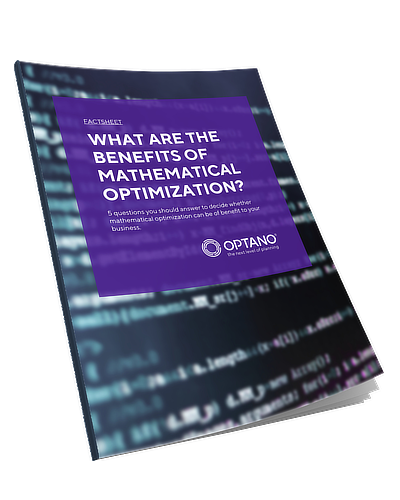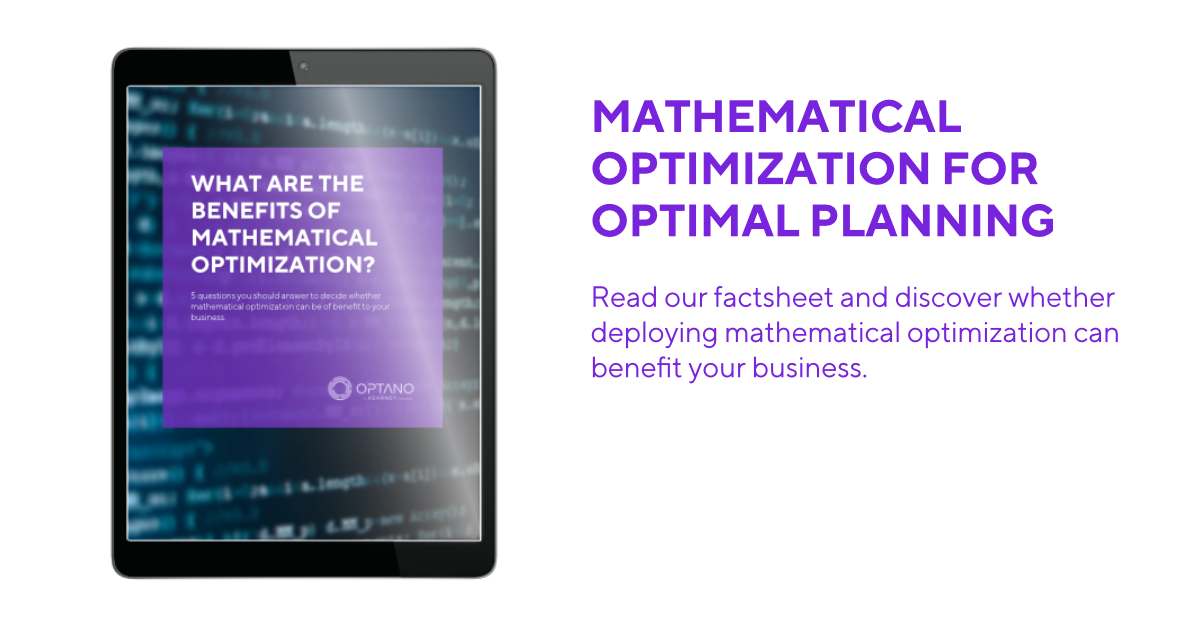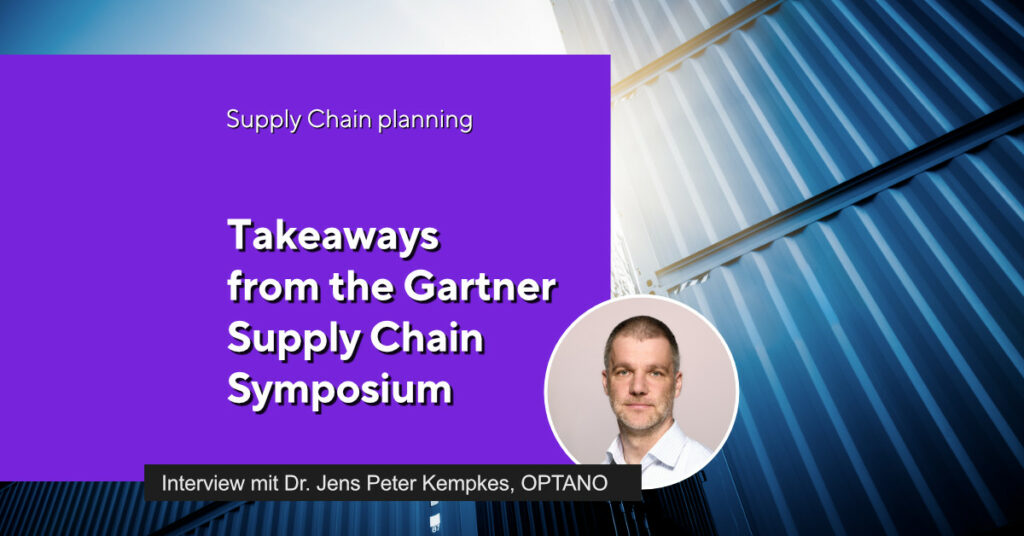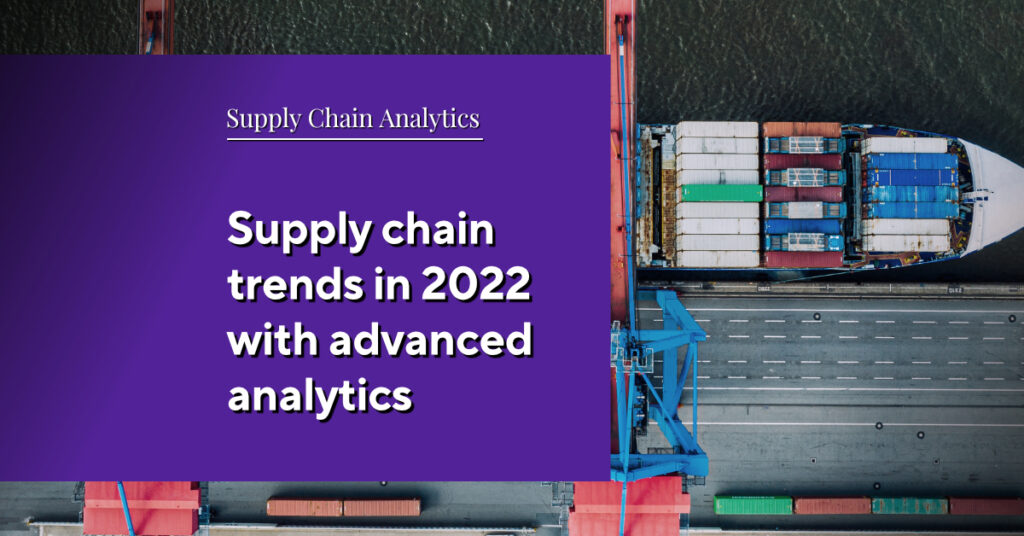The logistical miracle of Santa Claus
The Christmas season, full of magic and enchantment, is a special time for many of us. The story of Santa Claus adds to the fairy-tale atmosphere – especially for children, who, in the weeks leading up to Christmas Day, can barely await the arrival of the “gift-bringer”.
Yet if you take a closer look at this story, you will see that the man with the white beard and the red suit has a lot to do with logistics. So today we’d like to take a closer look at the tale of Santa Claus – from the perspective of an optimizer.
Facts and figures about Santa Claus
Whether it is Santa Claus, Weihnachtsmann, Père Noël or Father Christmas – the story of the man who lives at the North Pole is known internationally. Every Christmas he sets off in a flying sleigh pulled by reindeer to bring presents to children all over the world.
Let us now take a closer look at this aspect and first look at Santa’s target group. According to Statista, there are currently around 1.5 billion children aged 10 and under worldwide. This age roughly corresponds to the “age limit” of children who still believe in Santa Claus. Due to different cultures and beliefs, many of these children receive their gifts from another mythical figure at Christmas, for example the Christ Child, or on another festive day from the Epiphany witch Befana or from Sinterklaas. This means that the number of children who expect presents from Santa Claus on December 24 and 25 can be revised downwards. Yet even so, this still leaves him with about 1 billion children who he has to call on.
While traveling to the homes of these children, Santa will fly several million kilometers in his sleigh. Furthermore, the presents are expected on Christmas Eve and the morning of Christmas Day. This has to be done on time to avoid disappointment among the children – “just in time”, so to speak. Delivery across different time zones further complicates matter here.
However, there is also one aspect or ability that we must definitely continue to grant Santa Claus if our mind game is to work at all: He will either travel at an insane speed that disregards all physical laws such as acceleration and air resistance, or he will have the ability to slow down time. Let us simply assume that he has these superpowers for the following considerations.
Santa's route planning - A traveling salesman problem
Santa faces the question: How do I get the right presents to the right place at the right time? This is a typical route planning problem, which in turn is a classic optimization problem, known as the Traveling Salesman Problem (TSP).
With the help of mathematical optimization, one can easily find the best solution for a route planning problem. First of all, a good database is a prerequisite for optimal route planning. Collected information such as place of residence, delivery date, age, gender and the children’s Christmas wishes are “mandatory data” for Santa to do his job. Real-time data such as GPS tracking, weather forecasts and information on traffic conditions (there are airplanes in the sky, after all) can be included in the planning process.
Planning software like OPTANO analyzes all available data using advanced techniques, complex algorithms and solvers in the shortest possible time. The result is a sequence plan that calculates the fastest route for Santa Claus, taking all known factors into account.
Santa's sleigh - a knapsack problem
Santa’s sleigh may be big, but it doesn’t have enough room for more than 1 billion packages. This is also a typical optimization problem – namely the knapsack problem. Let’s have a look at what the solution could be with mathematical support.
Since we can assume that not all the packages will fit on the sleigh at the same time, Santa has to judge which presents have priority on which part of his route. Using a so-called utility value of the items, Santa can now find the best combination of packages to make the best use of the sleigh’s capacity.
The knapsack problem – just like the TSP – can be applied to real-world situations. By solving this optimization problem, many real-world challenges can be solved mathematically. For example, the relation to logistics is clearly present when the question arises: “How do I load a truck in a profit-driven way with goods that differ in value and size, taking into account its capacity?”
One thing becomes clear at this point, however. Santa Claus will probably not manage one single big tour with 1 billion presents. But returning to the North Pole again and again to reload the sleigh, taking empty runs into the bargain? Here, also, is a solution for Santa: A global logistics network with optimally located distribution centers.

Are you interested in our factsheet?
What are the benefits of mathematical optimization?
Distribution centers for gifts and the search for the best locations
Delivery and delivery reliability are- as already mentioned – essential aspects of Santa’s work. With the efficient location planning of a global logistics network that includes warehouses, distribution centers and hubs, the delivery of Christmas gifts can be significantly improved and on-time delivery at Christmas can be guaranteed.
Factors to be taken into account include demand – in this case, the children’s requests for gifts – and proximity to the delivery address, i.e. the locations of the homes where the children live. Delivery over the “last mile” – i.e. from the distribution center to the relevant chimney – can thus be made not only more quickly, but also on shorter transport routes. This also eliminates the time-consuming empty runs back to the North Pole.
One factor that can be neglected in Santa Claus’s case, yet which is relevant for many companies, is the placement of distribution centers at strategically located transport hubs. Fortunately, with his flying sleigh, Santa Claus is need not depend upon the existing infrastructure.
With the help of mathematical optimization, the effects of strategic decisions, such as the search for the best locations, can be analyzed with the use of “what-if scenarios”. On the basis of prescriptive analytics, Santa Claus also receives concrete recommendations for action on how to establish his global logistics network.
Employee capacity planning also for "animal flight personnel"?
In the story about Santa Claus, it is reindeer that pull the sleigh through the air. These are ideally suited as draft animals, because they have stamina and recover quickly. What better conditions for their deployment at Christmas? Because for the operational planning of Santa Claus’s 9 reindeer it is quite clear: Dasher, Dancer, Prancer, Vixen, Comet, Cupid, Donner, Blitzen and Rudolph must fully perform on the two relevant days. So, in Christmas planning, factors such as qualifications or number of hours (full or part-time) need not be considered.
Reindeer have a high cold tolerance which minimizes the risk of sudden staff absences due to colds. In addition, we may assume that mandatory working hours and rest periods do not apply to Santa’s “animal staff”. Thus, Santa’s staff scheduling is not very complex.
In larger companies with several hundred or thousand employees, however, these are all factors that must be taken into account when creating staff schedules, making it a complex task – too complex for fast manual planning. Staff scheduling also becomes critical when last-minute changes need to be taken into account – such as illness or a prioritized new order.
With the help of mathematical optimization, the deployment of employees can be quickly planned at the push of a button and adjusted as needed. This always takes into account the necessary qualifications as well as legal and collective bargaining conditions.
So, if Santa Claus should come up with the idea of expanding his fleet of vehicles and increasing his animal flight personnel in the future, planning software like OPTANO can definitely provide him with optimal support in creating deployment plans.
More interesting articles
Anticipate gift wishes with demand forecasts
Wish lists are usually written at fairly short notice in the weeks before Christmas and sent to Santa Claus. However, the warehouse at the North Pole and in the distribution centers described above should already be full during this time.
Forecasts based on historical sales data (wishes from past years) can help with this problem. In addition, data on the target group – such as the age, gender and interests of the children – and current trends on the toy market should also be included in the forecast. These demand forecasts help ensure that there are always enough dolls and building blocks in stock. In addition, the use of forecasts can prevent video games, which can become obsolete fairly quickly, from being overstocked and having to be sold at a loss.
In this way, demand forecasts can be used to avoid supply bottlenecks on the one hand and overfilled warehouses on the other. And if the right gift is not available, Santa always has plenty of socks in stock.
Santa Claus and the magic
Currently, Santa Claus will not need the help of mathematical optimization, because he has enough magic of his own. But for many companies, the use of mathematics in many areas can always provide optimal plans. Not just at Christmas, but every day.
You would like to learn more?
If you would like to find out whether mathematical optimization can benefit your business, simply download our factsheet “What does mathematical optimization bring?”.
If you would like to learn more about how OPTANO can improve your planning, or if you have any further questions, please contact us today. We’ll be happy to answer any questions you may have. Or, send us an email and we’ll get in touch with you.
Do you already know our factsheet on this topic?

In our factsheet “What are the benefits of mathematical optimization?” we ask 5 questions to help you assess whether mathematical optimization brings benefits to your organization.
To obtain our factsheet, all you need to do is enter your contact details in the space below. A pop-up window will then open to download the whitepaper. Please note that by providing us with your email address, you agree that we may contact you on this topic. You may revoke this agreement at any time by contacting privacy@optano.com.






